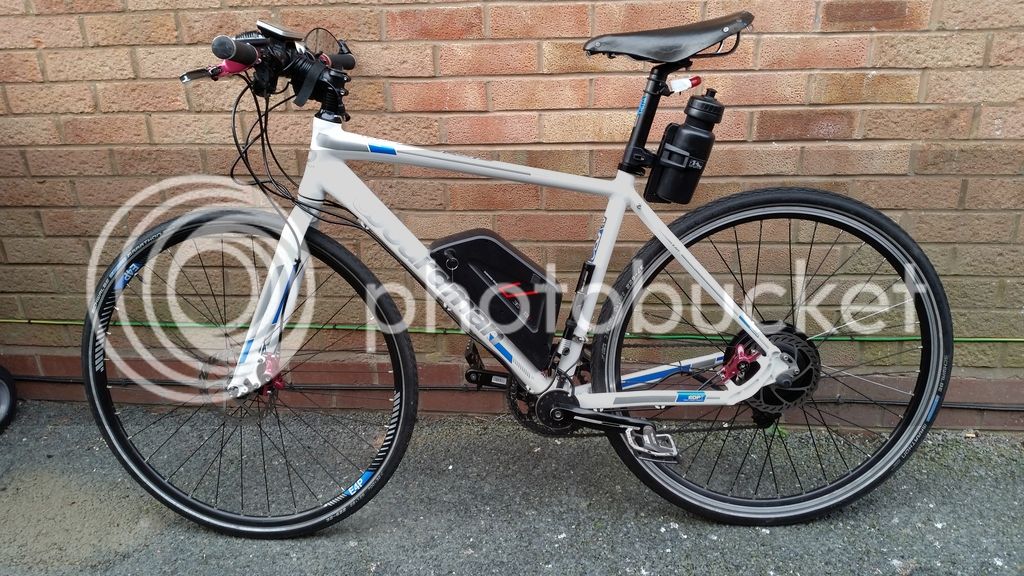jhotchkissca
100 µW
Conversion Recommendations
Bicycle to Convert: SOMA ES (Steel Frame) 30 speed Shimano 105 drop bars Commuting bike with Cane Creek Brake interrupters.
My age: 58
My weight: 200 lbs.
My (new) ride to work: 18 miles with some hills
I used to ride 12 miles each way (10 years), 4 days a week.
My experience: Experienced bicycle commuter, ride 3000+ miles annually
Desired max speed on level ground: 25 mph
Desired max range: 60 miles at 20+mph
Preferred bike wheel size: 700c (I already own the bike)
Brake type: Shimano 105 integrated shift/brake
Rider weight: 200 lb
Rider Age: 58
Rider Experience: Experienced (non ebike) 30+ years commuting
Terrain: Some hills (near end of ride)
Budget: under $1,000
Would like the least amount of drag when motor is disengaged.
Also thinking I might need 2 chargers, one for home and one for office.
I'd like to keep the drop bars and the integrated brake/shifters.
Bicycle to Convert: SOMA ES (Steel Frame) 30 speed Shimano 105 drop bars Commuting bike with Cane Creek Brake interrupters.
My age: 58
My weight: 200 lbs.
My (new) ride to work: 18 miles with some hills
I used to ride 12 miles each way (10 years), 4 days a week.
My experience: Experienced bicycle commuter, ride 3000+ miles annually
Desired max speed on level ground: 25 mph
Desired max range: 60 miles at 20+mph
Preferred bike wheel size: 700c (I already own the bike)
Brake type: Shimano 105 integrated shift/brake
Rider weight: 200 lb
Rider Age: 58
Rider Experience: Experienced (non ebike) 30+ years commuting
Terrain: Some hills (near end of ride)
Budget: under $1,000
Would like the least amount of drag when motor is disengaged.
Also thinking I might need 2 chargers, one for home and one for office.
I'd like to keep the drop bars and the integrated brake/shifters.


